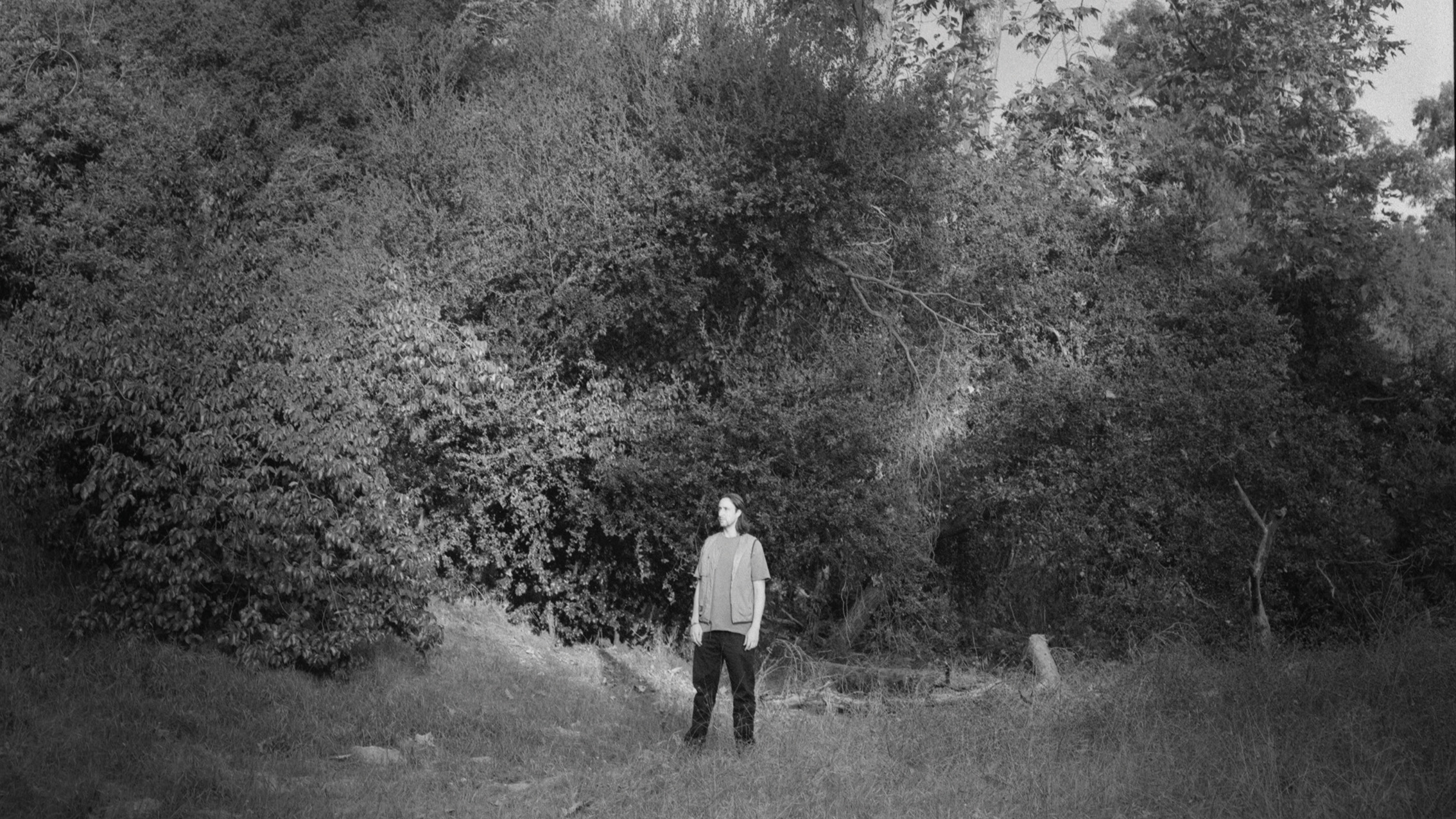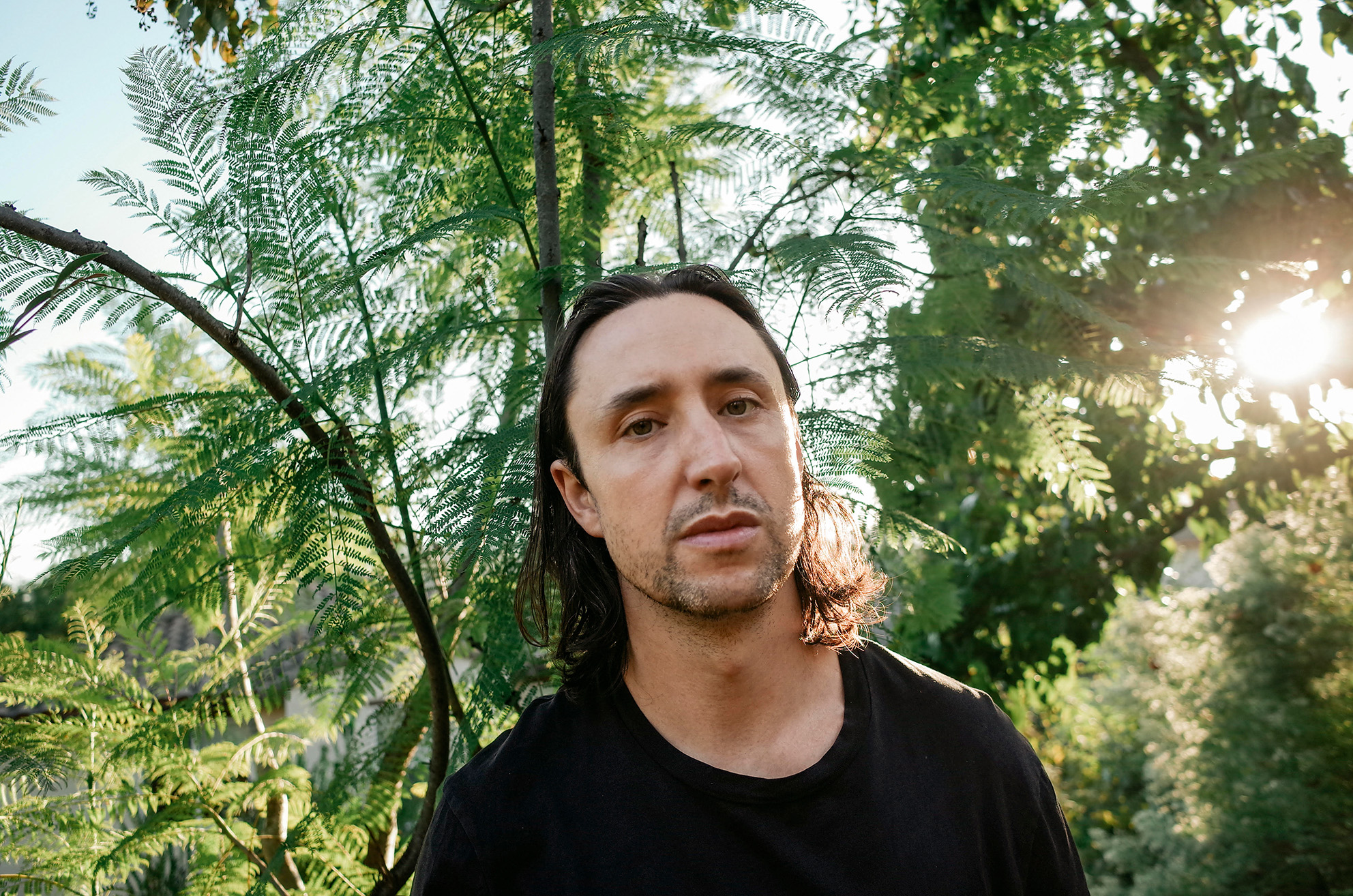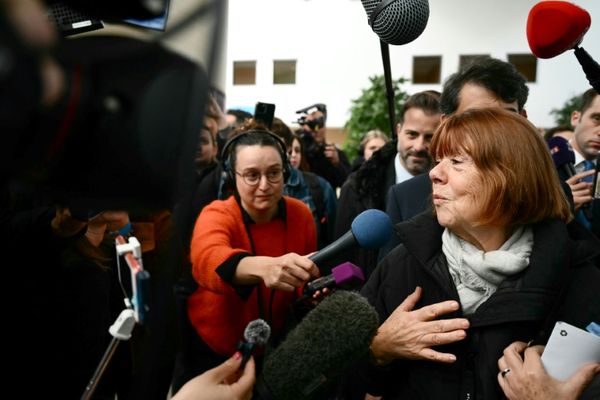
Hailing from Boulder, Colorado, ethereal songwriter Tom Krell has experienced all sides of the commercial pop terrain. After posting a string of anonymous digital EPs in 2009, critics picked up on his stunning falsetto vocal and melodic, evocative ambience of his debut album, Love Remains.
Signing to Domino imprint Weird World Records, Krell’s career took an immediate upward trajectory, with dreamy electro-acoustic pop albums Total Loss (2012) and What Is This Heart? (2014) achieving significant commercial success, dragging Krell into label boardrooms where it ultimately became almost impossible to fully control his artistic direction.
By 2018, How to Dress Well had toured in almost every corner of the globe, albeit rarely staying anywhere for more than 24 hours, and by the time he’d released his fifth album, The Anteroom, Krell had performed 150 solo shows in two years, leaving him exhausted. The follow up, I Am Toward You, has been four years in the making – a period during which Krell reoriented his approach to music-making through meditation and the use of psychedelic medicines.
Free of the cynicism residing on some of his earlier material, I Am Toward You is Krell’s most poetic album to date, combining dense guitar distortions, healing synths and meaningful lyrical observations that transcend modern pop tropes.
Your albums have never been just a collection of songs but designed to be more experiential. What set you on this path?
“Initially, my music was very experiential, almost performing a virtual/spiritual function before I started to think about songwriting as a product. The first record, Love Remains, was in that world of experience over commodity, but then I needed to start touring and found myself having to include a couple of big songs on every album, which is when records like What Is This Heart? and Care started to become more song-driven.
These days, people have short attention spans and don’t have the bandwidth for an artist with a long career
“These days, people have short attention spans and don’t have the bandwidth for an artist with a long career, so my fifth record, The Anteroom, was a really intense return to that experiential method or approach, whereas I Am Toward You is more in the middle. There are definitely songs on the record, but a lot of care has been put into their micro arrangement and the sonic details are overwhelming. The song No Light could be analysed as a pop song, but its sonic characteristics are so intense that it’s more like listening to how much distortion you can put into a beautiful sound without it breaking down.”
What makes you think people are fatigued with artists who have longevity, as opposed to those who simply put out too many releases?
“One of the things I think about a lot is how extremely lucky I am to have had such a long career. This is the first record of the second decade, but I’ve noticed that most artists in the 21st century only get to two or three albums. Most people in America and Europe stop listening to new music at college or university – what they liked then is what they’ll listen to for the rest of their lives. Those are their songs from the time they had and then they enter into this recirculating nostalgia.
Now, because of ‘streaming brain’, people don’t even listen to new music after high school
“Now, because of ‘streaming brain’, people don’t even listen to new music after high school. I play a lot of pick-up basketball, which is a way to encounter random people in life, and a few of them said to me, whoa dude, we were so into your songs in college. So I think with today’s listening and lifestyle habits people do tire. I mean, personally, I’m a mega fan of The Durutti Column, but there are still albums I’ve only listened to once.”
Even though some of your tracks could be considered ‘pop’, they don’t have a traditional verse/chorus structure. At the peak of your success, were you pressurised to record ‘hits’ or create something that could go viral?
“I felt an enormous pressure to do that. My third record, What Is This Heart? was probably my most well-received commercially. We got a lot of syncs on TV shows and commercials and sold a lot of concert tickets. At one point, my manager sat me down with label people and said, for the next record you should swing for the pop fences. I felt that I’d already done that, but they said, no, we gotta go bigger and bring in additional songwriters. I was thinking, ‘oh fuck, I don’t wanna do that’.
“They made some recommendations for a big pop producer and I agreed to make that part of the process, but once you give them an inch they take a mile. I wanted my friend to mix the record, but they wanted some Grammy-award-winning guy to do it and when you’re working with so-called ‘professional’ music people, they don’t care about ideas, they care about a song having a hook within the first 15 seconds.”
I don’t think people really understand how much money you earn when you’re supposedly a successful indie artist
Did you cave in to that pressure at all?
“I don’t think people really understand how much money you earn when you’re supposedly a successful indie artist – it’s not enough to live on in the city you want to live in or raise a family, so I needed to figure out how to earn more money if I was going to do this as my profession for the rest of my life.
“I wasn’t some kind of nepo baby who could afford to make abstract art my whole life and chill in a condo, so I did feel a lot of pressure at that moment and we made a lot of cool-sounding stuff, but we also ruined a lot of songs that I thought might have been really good otherwise. The record, Care, doesn’t have a lot of me in it, which is fine, but so much money was put into advertising it that younger people now feel that it’s representative of my sound. It’s a complicated business for sure."

While recording EPs and albums, you studied for a philosophy doctorate. Was that a purely recreational activity or a back-up profession?
“When I was 17, I decided that I wanted to be a professor of philosophy because I fell in love with the communication of abstract ideas. I went to college and grad school, finished a master’s degree in philosophy and went abroad for a few years translating philosophy books from German to English. It was while I was in Germany that I started making music and I released Love Remains in 2010 while starting a PhD programme back in Chicago.
“At that point, realising that I wanted to make music completely changed my life, but nowadays universities are maybe the only cultural milieu suffering a worse fate than the music industry. I have friends pursuing professorships who are applying to 200 schools and don’t hear back from any of them; the best job they can get is in the middle of Kansas teaching 50 hours a week.”
Does that philosophical correlation extend deeply into your music?
“Oh yeah. My mind is pretty weird and all the philosophical work I’ve done has shaped the way I see the world and think. Looking at my library right now I can see how all of this work has called out to me in the same way that music has driven my whole life. I’m the unifying element, but I feel that the music tends to be more poetic than philosophical.”
I feel like a bastard for saying this, but I’ve never had writer’s block. If anything, despite trying, I literally can’t make the same record twice
The creation of I Am Toward You came about following a period of ‘occult meditation’ that you embarked upon after years of intense touring. Would you describe that as being a process of recovery, rather than some kind of creative preparation?
“I’ve done the two-week meditation thing a bunch of times now. You put your mind to extreme tests when reading this type of thing and meditation is an extension of that. I remember feeling like a bastard for saying this, but I’ve never had writer’s block.
“If anything, one of the challenges I’ve faced is that, despite trying, I literally can’t make the same record twice, which makes it hard for music journalists to analyse me and especially hard for Spotify playlisters to playlist me. I’m basically making the work that I’m called to make at any given juncture, so while looking back I can understand how I arrived at where I am today, I’ve never made a record that sounds like I Am Toward You or is in this genre.
“Regarding the touring, the problem I have is that it started to become quite artless. I’d spent all this time building up a beautiful visual show, but with all the travelling it started to become a chore. I’ve basically been everywhere in the world, but only for between six to 25 hours.”
The record took four years to make. Did the songs flow with your changing mood or did you focus on capturing something specific from the start?
“I don’t think my records are psychological in that way. Say you want to make a beautiful marble sculpture of a gladiator with one foot off the ground ready to leap. If you’re working on it 200 days on a row and on day 201 you wake up and feel a little depressed, that doesn’t mean the sculpture became depressing on that day. It has a material momentum and inertia, and songs are like that too.
“Part of the reason I like to make this music is that some of the songs have samples I made in 2011 and if you listen to that sample it’s not subject to interpretation, it’s there because it has very concrete sonic features and cadence. Making the songs is about discovering what the songs are rather than thinking about how I feel.”
I’m getting pretty allergic to making music in Ableton
How is your studio environment set up to bring the best out of you creatively?
“The content of my studio changes all the time. Right now, I’m obviously working on my next music, but for some reason I’ve moved completely to what I would describe as an old-school setup consisting of a loop pedal, a guitar and a couple of effects pedals. I’ve got this unbelievable tool, which is a quarter-inch cable attached to a lightning bolt adapter, so I can play anything off of my phone into my loop pedal.
“It’s a really rudimentary way of sampling, but that’s what I’m really into right now – getting a loop going and doing these long-form jams where I play a song. A big thing for me that started on my last record The Anteroom and really came out in this one is that I’m getting pretty allergic to making music in Ableton. If you play any song to me that came out in 2024 I can tell you what DAW it was made on and the way that workflow creates a sonic grammar is something that’s started to really frustrate me.”
Can you go deeper into what specifically frustrates you?
“For me, Ableton creates the illusion of having a very ‘innovative’ sonic grammar, yet everybody can do it. It’s something that I hear in a lot of our so-called beloved experimental artists these days, but it’s not actually experimental – it’s just Ableton, so I’m trying to figure out how to do experimentation that doesn’t lean on the easy tricks of a DAW that are meant to make stuff sound like the Ali G theme song – you know, the sonic stuff where all his clothes are flying onto his body.
“So much electronic music sounds like that, but if you listen to early jungle music, for example, it now sounds really experimental because they used these Tascams that could only do one thing and artists were like, how do we get this thing to make something innovative?”
Is Ableton different to any other technology that becomes very popular and, as a result, imprints itself on music-making culture?
“It could apply to any technology or instrument, but you can’t create a digital platform without minimally structuring and guiding the decisions that can and even should be made on that platform. Even if they try to make a DAW a neutral workstation, the way it’s colour coded incentivises certain melodies and rhythms and the kinds of technologies they prioritise in drop-down menus and people they hire as influencers mean it becomes a culture rather than a tool.
“Obviously, the guitar structures people’s behaviours too – there’s six strings, x number of frets and you can only play chords by doing certain things, but it’s so much easier to revolt on a simple instrument than it is to truly revolt on a digital platform. That’s just a feature of digital reality – in order to erect usable worlds you have to make decisions that have consequences.”

Is it as much down to people’s lack of innovation than the product they’re using?
“There are two ways to make amazing music, one is to be a naïve, green first timer and not know how to use the tool and therefore do something totally fucking weird. And then there’s the huge middle section of the curve who use the tool as it’s originally intended in more or less detail. Then you have the 1% who personally hacked the Max/MSP plugin to create insane generative music.
“The same could apply to guitar – some people don’t know the chords, are playing with one finger and technically amazing and others play extremely detailed, beautiful fingerpicking guitar work. Meanwhile, everyone in the middle is playing the same power chords as everybody else.”
You have to tell us about the track No Light, which we read is based on a rather horrific-sounding incident that you had in an alleyway during the pandemic?
“I had a lot of horrific incidents in that alley during the pandemic [laughs]. One day the dumpster caught fire and I had to run out and pull this flaming dumpster away to keep my house from burning down. It was so weird being in LA during the pandemic because life didn’t change that much as there’s no public transit or spaces and we’re always in stay-at-home mode in many ways. So I started to pursue that and built out the track No Light, which felt like a poppy song but not a poppy thing to sing.
“While working on the song I heard this horrific sound outside and saw this person crawling across the ground between a car and the wall. I thought, oh god, so I went outside and asked if everything was okay, but it was a pandemic so people were like, not well. This person had some interesting things to say about pig masks, the coming of Christ and the end of the world. I tried to take what they said and put a little bit of it into the song. Pentecost as Eschaton was my translation – in addition to seemingly being haunted by a pig mask.”

The great outdoors: how to start making field recordings to use in your music
Field recordings tend to play a prominent role in your songs. Why do you use them in the way that you do?
“I was doing field recordings long before I knew it as a term of art and don’t have the same hang ups about fidelity and the necessary preconditions of recording. For example, if I hear someone in the apartment next door banging their dishes, I think of it creating a cool little high-frequency percussive thing. On the track The Only True Joy on Earth, there’s a shaker sound that’s actually my dog jingling his tags. Basically, I’m not a musician who thinks it might sound cool to have a D moving into a suspended chord.
“Every single recording has its own spatiotemporal signature, but as musicians we take enormous pains to eliminate that specificity from our recordings, building elaborate, weird rooms and equipment to remove the signatures, but I think those signatures sound cool. I like to hear the way the microphone is reacting, the shape of the room or the physical body in the voice, like the lips, tongue, throat and nasal cavity, and the one thing I do like is really good singing – I’m obsessed with the human voice sounding beautiful.”
Does that mean you’re against Auto-Tune or anything that will clean up a vocal?
“Well Auto-Tune’s almost become a cultural signature. When people first started using amplification and the earliest forms of distortion, people thought it sounded insane, so we got to a point in human history where people would distort every single guitar chord to sound cool. But these things ebb and flow, eventually the coolest shit was not to distort the guitar at all and that line of transgression is always shifting as culture and history are shifting.
“When I first made music singing in a beautiful R&B-style voice, people thought I was an idiot, but now you have to sing beautifully otherwise you don’t count. Bad singing used to be a vibe, but it’s very rare now that you’ll find an indie band with a bad singer. Drumming is another great example – I don’t know any records with bad drummers and we need more bad drummers. If you want to talk about creating a foundation that you really have to react to, then get somebody who can’t keep to the rhythm – that’s how you find out how good a guitar player really is.”

What can you tell us about the track Crypt Sustain, which seems to provocatively balance harsh distortion with ambient pop tropes?
“That song is definitely an exercise in contrast. The original demo had nothing in the second verse other than vocals, then I added the guitar because I realised the song was very inspired by the track One by Metallica. It’s a metal song that’s about the emotional expressive reality of metal music, which is a perfect example of the most brutal music you can make. Metal is so physical, militaristic and violent, but it’s always just about a sad dude who can’t be vulnerable and bringing that aspect into a song was something I wanted to do.”
Is your method for achieving distortion based around guitar pedals or using in-the-box effects?
“I’m trying to think if I even played a guitar on a big amp on the track Crypt Sustain. I think it was all line-in guitar and using the most shredded, distorted thing that I could possibly find on the computer, which ended up being MIDI notes playing a softsynth. The distorted stuff at the end of No Light, where the track is almost falling apart, is pretty much in-the-box and some hardware pedals, but no conventional rock distortion techniques.”
Nothingprayer is another track that seems quite polarised – in this case, angelic choral vocals offset by layers of guitar distortion. How did you work with the various contributors to build the song?
“All of the vocals on that song, including the little high-pitched rapping sound, came from me. There’s a really amazing solo acoustic guitar lick that comes in about halfway through that was played by Aaron Charles Read, the artist Anenon contributed woodwinds and some saxophone, and there’s another player providing hammer dulcimer in the middle section.
“What’s interesting is that the song was initially going to be an interlude but I loved playing around with Aaron’s lead acoustic guitar melody, which got stuck in my head for days and became the foundation of the whole piece.”
The Only True Joy on Earth sounds like a sermon that’s being delivered in a huge temple, in the midst of oceans of reverb…
“It was recorded in my apartment and, again, is all based on experimentation and manipulation. At the beginning, I used a couple of chopped up samples, but I was initially singing that mantra over another song and felt I should probably do something like that myself.
“I took the lyric from the Christian mystic Thomas Merton’s book called New Seeds of Contemplation. I got into that book because I was thinking about the idea of nothing prayer… a prayer that’s not a request but a truly indeterminate contemplation of the absolute and I found that very profound and poetic.”
Finally, does the cute drum pattern that’s heard on the closing track A Secret within the Voice come from the Roland CR-78?
“No. It was actually made on an early Alesis HR-16 drum machine, but the name of the sample is called something like Roland Poland. A friend of mine had this drum machine that I used for a week in 2018 and the loop actually came from that. I’d have to look into it, but if I was to place a bet I’d say that the sample on the Alesis is a dupe of the CR-78. Looking at the stuff artists made using the CR-78, this loop basically has the same sound and that’s why I liked it too.”
How to Dress Well's I Am Toward You is out now on Sargent House.







